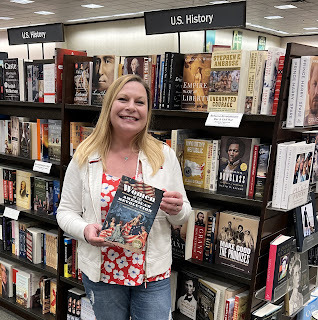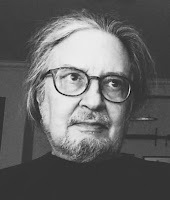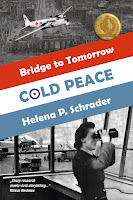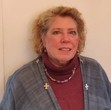Helena P. Schrader's Blog, page 7
June 4, 2024
Why I Write Historical Fiction -- A Guestpost by Terri Wangard
Terri Wangard’sfirst Girl Scout badge was the Writer, the result of scribbling stories in a notebook. Reading such books as the RevolutionaryWar tale, The Hornet’s Nest by Sally Watson, during her school days,whetted her appetite for history. An interest in genealogy led to her being therecipient of old family letters, which led to an idea for a historical novel.
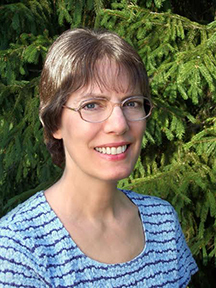
A batch of forgotten letters was found in my grandmother’shouse. Written in 1947 and 1948, they came from distant cousins in Germany. Mygrandparents and other relatives had been sending them care packages. Mygreat-great-grandfather immigrated to Wisconsin in the 1870s, as did twobrothers. A fourth brother remained in Germany, and these letters came from hisgrandchildren.
When I revived a dream to write in 2008, I decided thefamily in the letters would be the perfect subject around which to craft astory. Research revealed life in Nazi Germany as increasingly grim before thewar even started. While the letters provide a fascinating glimpse of life in postwar-tornGermany, but nothing was mentioned about the war years. How had the familycoped? I turned to the internet and searched on the family’s factory name. Ifound it all right, in a list of German companies that used slave labor. Iwanted my family to be the good guys, but that hope grew shaky.
Contact with the German relatives ceased in 1948 after theGerman currency reform, and with their silence in the letters, many questionscouldn’t be answered. Why had they refrained from any mention of their thoughtsand activities during Hitler’s regime? Desire to forget? Shame of the vanquished?Concern the American family wouldn’t help if they knew the truth?
Circumstances of their postwar life offer a few facts. Thefamily consisted of a brother, his wife, and three young children, and a sisterand her husband, and their “old gray mother,” who turned 66 in 1947. Anotherbrother languished as a prisoner of war in Russia, not returning home until1949, I learned from the German department for the notification of next of kin.The sister and her bridegroom had lived in Canada for five years, returning toGermany in 1937 because she was homesick. They were bombed out of their homesand lived in their former offices, temporarily fixed up as a residence. Beforethe war, they employed about one hundred men, but in 1947, had fewer thanforty-five, with no coal, electricity, or raw materials to work with.
My imagination took over. The family, not the newlyweds,came to Wisconsin in the thirties. Because a critique partner scorned someonereturning to Hitler’s Germany due to homesickness, I gave them a morecompelling reason when I rewrote the story. The grandfather had died and thefather had to return to take over the factory, much to the daughters’ dismay,who loved their new life in America.
They did not support Hitler. Because their factory had toproduce armaments and meet quotas imposed on them, they had no choice inaccepting Eastern European forced laborers, Russian POWs, and Italian militaryinternees.
The older daughter (my main character) took pride incommitting acts of passive resistance. Now a war widow, she hid a downedAmerican airman she had known in Wisconsin, an act punishable by execution.When they were betrayed, a dangerous escape from Germany ensued.
Maybe the family did support Hitler. Many did beforerealizing his true colors. My version probably doesn’t come close to the truth,especially concerning the daughter. The real daughter was twelve years old in1947. No matter. This is fiction, and I created a family I can be proud of.
I hadn’t planned on continuing to write historical novels,but an editor informed me that I likely would receive a contract only if I hada series. Okay, I wrote two more. All three feature B-17 navigators atRidgewell Air Base in England. In the second book, the plane had to land inneutral Sweden. How many World War II stories have you read based in Sweden?Finding unusual settings is part of my fun.
I was a history major in college, so I obviously enjoyhistory. Writing in a past era allows me the opportunity to step into yearsbefore my lifetime. I live vicariously through my heroines. They have talents Iwish I had. In the series, one is a seamstress, one an artist, and one anoutgoing Red Cross Clubmobile doughnut girl.
My new series, Unsung Stories of World War II, again turnsto the unexpected. Seashells in My Pocket, my seventh novel which releasedin March, takes place in Brazil. Next year’s No Leaves in Autumn is setin Iceland. The challenge of these locations is finding research materials towrite accurate stories. I’ve been blessed to discover three out-of-printmemoirs that allowed me to step back in time and join my characters in theiradventures. It’s the closest I’ll come to time travel.
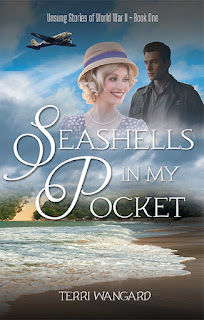
Find out more about Terri's books at: www.terriwangard.com
Blog host Helena P. Schrader is an award-winning novelist and author of six non-fiction and twenty historical fiction books. Her current project in a three-part series about the Berlin Airlift.
The first two volumes of the Bridge to Tomorrow Trilogy are now available.
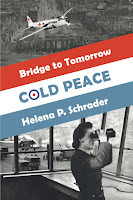
The first battle of the Cold War is about to begin....
Berlin 1948. In the ruins ofHitler’s capital, former RAF officers, a woman pilot, and the victim of Russianbrutality form an air ambulance company. But the West is on a collision coursewith Stalin’s aggression and Berlin is about to become a flashpoint. World WarThree is only a misstep away. Buy Now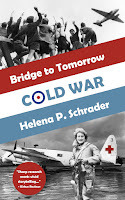
Berlin is under siege. More than twomillion civilians must be supplied by air -- or surrender to Stalin's oppression.
USAF Captain J.B. Baronowsky and RAF FlightLieutenant Kit Moran once risked their lives to drop high explosives on Berlin.They are about to deliver milk, flour and children’s shoes instead. Meanwhile,two women pilots are flying an air ambulance that carries malnourished andabandoned children to freedom in the West. Until General Winter deploys on theside of Russia. Buy now!
Based on historical events, award-winning and best-selling novelistHelena P. Schrader delivers an insightful, exciting and moving tale about howformer enemies became friends in the face of Russian aggression — and how closethe Berlin Airlift came to failing.
Winning a war with milk, coal and candy!
May 28, 2024
Why I Write Historical Fiction - A Guest Blogpost by John Lynch
John Lynch writes historical fiction under the name RJ Lynch. He writes about people at the bottom of the social heap and says researching those lives takes a lot more effort than writing about the upper classes – but is worth it.
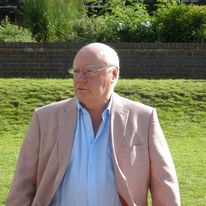
I write contemporary fiction as John Lynch and policeprocedurals as JJ Sullivan, but historical fiction has a special place in myheart. My interest arose from a combination of stories handed down in my familythrough the generations (some of which have proved to be hilariously wide ofthe mark but some of which are surprisingly accurate) and research that beganwith a project looking into a specific incident in the north-east of England inthe seventeen sixties. That led to my spending a great deal of time in countyarchives, especially in Durham and Northumberland, and I became fascinated bythe material I found that told me how ordinary people really lived. In TheStructures of Everyday Life, Fernand Braudel writes brilliantly about the top-down view of history taught in everyschool and university and the bottom-up stories of the lives lived by almosteveryone. I decided that those bottom-up stories were the ones I wanted totell. I write about the farm labourers, the coalminers, the chambermaids andwasherwomen from whom most of us are descended. They lived, loved, fought,experienced joy and heartbreak just like anyone else. Their stories should betold, and I have chosen to tell them. Find out more at: https://jlynchblog.com/
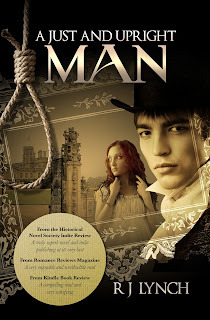
Blog host Helena P. Schrader is an award-winning novelist and author of six non-fiction and twenty historical fiction books. Her current project in a three-part series about the Berlin Airlift.
The first two volumes of the Bridge to Tomorrow Trilogy are now available.

The first battle of the Cold War is about to begin....
Berlin 1948. In the ruins ofHitler’s capital, former RAF officers, a woman pilot, and the victim of Russianbrutality form an air ambulance company. But the West is on a collision coursewith Stalin’s aggression and Berlin is about to become a flashpoint. World WarThree is only a misstep away. Buy Now
Berlin is under siege. More than twomillion civilians must be supplied by air -- or surrender to Stalin's oppression.
USAF Captain J.B. Baronowsky and RAF FlightLieutenant Kit Moran once risked their lives to drop high explosives on Berlin.They are about to deliver milk, flour and children’s shoes instead. Meanwhile,two women pilots are flying an air ambulance that carries malnourished andabandoned children to freedom in the West. Until General Winter deploys on theside of Russia. Buy now!
Based on historical events, award-winning and best-selling novelistHelena P. Schrader delivers an insightful, exciting and moving tale about howformer enemies became friends in the face of Russian aggression — and how closethe Berlin Airlift came to failing.
Winning a war with milk, coal and candy!
May 21, 2024
Why I Write Historical Fiction - A Guest Blogpost by Marina Ospova
Marina Osipova is a multi-award-winning and a best-sellingauthor who writes with “emotional realism” and “taking on a subject that fewauthors have touched.” A graduate from the Moscow State Institute of Historyand Archives, she is dedicated to writing historical fiction, especiallyrelated to WWII and the Eastern front.
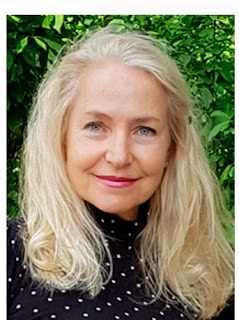
I wasn’t born a story-teller. If twenty yearsago somebody would tell me I’ll become a writer and by now will have sixpublished books under my belt, I’d thought this person . . . fill the dots. Idon’t know what bug had bitten me, but after my immigration to the United States,I started writing. So, it must have been an American bug. First, there wereflash stories, then short stories, then a contemporary tale of my life in theSoviet Union during Perestroika, which, to my total astonishment, garnered someliterary awards. When I was close to finishing the next contemporary romance,something happened: an insistent vision of a simple grave on the outskirts of avillage 100 miles away from Moscow where my parents bought a peasant hut tospend summers would invade my mind. The grave was of eight local men who wereshot and killed by the invading Germans in 1941. Repeatedly, this imagedistracted me from my work in progress; it squeezed all ideas that were tobring me to the desired fruition of my book in progress out of my head. Soon itbecame an obsession. The Cruel Romance wasconceived. I think it was the first piece in my writing-related jigsaw puzzle.
I was born to a military family and, more tothat, it took place in a military hospital thirty miles away from Berlin in theEastern Germany. I consider it to be one of the keys to thepuzzle.
Raised up in the then Soviet Union,inevitably, like every child since kindergarten, I was educated as belonging toa glorious nation, the one that came victorious in the Great Patriotic War asWWII was and still is called in modern Russia and on the post-Soviet territories. We grewup surrounded by portraits of the Communist Party leaders and war heroes, be ita general or a soldier.
The cult of war manifested itself everywhere.In my school, walls were decorated with nine portraits of its graduates—theHeroes of the Soviet Union (the highest distinction in the USSR). Of course, weknew their biographies by heart; we visited their parents or family members whoshowed us their pictures and tearfully but proudly told us stories about theirperished loved ones. That was another important key.
We were brought up in an unshakable belief in“the heroic feat of the Soviet people, who saved humanityfrom the fascist plague.” In any school throughout the country, in historylessons and at special events, the concept about the war and the liberatingmission of the Soviet people was embedded into the immature consciousness ofpupils’ heads.
Books and movies about war—there werethousands of them! The war songs! We, children, and teenagers, sang them whilemarching along streets in columns during holidays, at the Young Pioneersgatherings and Komsomol meetings, adults at the table with a vodka bottle whilecoming together for whatever reason. The Katyusha song! Whodoesn’t know it? The entire world knows!
In middle-school classes, we were trained tohandle a grenade and a rifle, and, of course, how to pull up a gas maskquickly. I loved to go to a shooting range: in my brain, the idea of beingprepared to “defend my country from the damned western capitalists and imperialists”took deep roots. In winter, we had “war-games” where we used snowballs forbullets and an opposing party was the enemy—another way to anchoring the ideaof an imminent war in our immature consciousness.
Every year, Victory Day parades on the RedSquare on 9 May—who didn’t see them on the news?
Every place, small and big, had its warmuseum, even if it was a tiny room or a corner of the classroom. Nowadays, it hasbecome popular again! Travel around Russia, and you’ll see a T34, cannons, theKatyusha rocket launchers on pedestals in cities, villages, and alongroadsides. As if calling: “Never forget it!”
As I’ve already mentioned, my father was inthe active military. He was a child during the war, but his older brothersfought on the front, and the youngest of them perished at eighteen. He waspronounced missing. The family learned of the place where he perished and wasburied only after the Soviet Union collapsed. There were no conversations aboutwar experiences in the family. Many years ago, and it was only one time, one ofmy fathers’ brothers, while visiting us, told me embarrassingly about what theSoviet Army committed in Poland when it penetrated the country on itsavalanche-like forced march toward the Hitler Germany. Don’t ask me what hedivulged. I won’t tell you even under torture. It was a shock: the firstsobering key.
After Perestroika, when archives were opened(they were quickly sealed again) tons of literary works and makeshiftpublications previously banned splashed out onto the streets and to themarkets, freely changed hands. And what dreadful surprises they carried! Aboutevery aspect of our life. About the war. About the country’s leaders. The entirepopulation read themavidly. Me included. And what an appalling revelation it was! In my desire toget to the truth, but still under the spell of the insidious propaganda,I hesitantly started digging deeper. Inevitably, the accumulated newly gainedevidence about the war became that tipping point that allowed me to piecetogether all my personal experiences and the recent disclosures about the war.What didn’t change my mind, though, was and still is that the ordinary Sovietpeople sincerely defended their country without sparing their lives.
As I completed the jigsawpuzzle, it made me a historical fiction writer. I desperately want more peopleto learn about WWII from the perspective of the Soviet side and the Easternfront.
So, why do I writehistorical fiction? How could I not? It was destined.
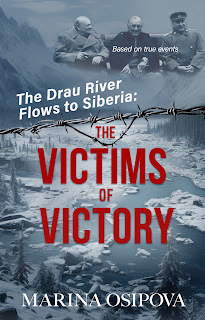
Find out more about The Victims of Victory here.
Blog host Helena P. Schrader is an award-winning novelist and author of six non-fiction and twenty historical fiction books. Her current project in a three-part series about the Berlin Airlift.
The first two volumes of the Bridge to Tomorrow Trilogy are now available.

The first battle of the Cold War is about to begin....
Berlin 1948. In the ruins ofHitler’s capital, former RAF officers, a woman pilot, and the victim of Russianbrutality form an air ambulance company. But the West is on a collision coursewith Stalin’s aggression and Berlin is about to become a flashpoint. World WarThree is only a misstep away. Buy Now
Berlin is under siege. More than twomillion civilians must be supplied by air -- or surrender to Stalin's oppression.
USAF Captain J.B. Baronowsky and RAF FlightLieutenant Kit Moran once risked their lives to drop high explosives on Berlin.They are about to deliver milk, flour and children’s shoes instead. Meanwhile,two women pilots are flying an air ambulance that carries malnourished andabandoned children to freedom in the West. Until General Winter deploys on theside of Russia. Buy now!
Based on historical events, award-winning and best-selling novelistHelena P. Schrader delivers an insightful, exciting and moving tale about howformer enemies became friends in the face of Russian aggression — and how closethe Berlin Airlift came to failing.
Winning a war with milk, coal and candy!
May 15, 2024
"COLD WAR" - Book II in the "Bridge to Tomorrow" Series Released
Book II of the Bridge to Tomorrow Series is now available for purchase.
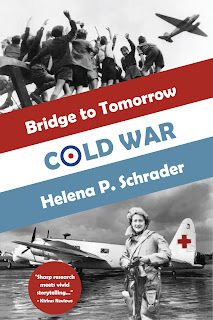
The Bridge to Tomorrow Seriesdescribes how the West stopped Russian aggression without war during the BerlinCrisis 1948/1949. This bloodless victory of democracy over tyranny has manylessons for the present day, which Helena P. Schrader, author of an acclaimed non-fictionbook about the Berlin Airlift, seamlessly works into her trilogy of novels. Thecomponents of Bridge to Tomorrow go beyond the political chess game andlogistical achievements to explore the social and psychological impact of thispivotal historical event. Schrader employs a diverse cast of characters --women and men, British, American, German and Ukrainian -- to enable the readerto see the unfolding events through different, even conflicting, perspectives.As the reader gets drawn into their lives of the characters, the historical tensionsrise, and the trilogy accelerates the pace to that of a thriller.
Cold War, the second book in the series, continues where Cold Peace left off:
Berlin is under siege. More than twomillion civilians in Hitler’s former capital will starve unless they receivefood, medicine and more by air.
USAF Captain J.B. Baronowsky and RAF FlightLieutenant Kit Moran once risked their lives to drop high explosives on Berlin.They are about to deliver milk, flour and children’s shoes instead. Meanwhile,two women pilots are flying an air ambulance that carries malnourished andabandoned children to freedom in the West. Until General Winter deploys on theside of Russia….
Based on historical events, award-winning novelistHelena P. Schrader delivers an insightful, exciting and moving tale about howformer enemies became friends in the face of Russian aggression — and how closethe Berlin Airlift came to failing under the assault of “General Winter.”
Buy Now on Amazon.com; Buy Now on Barnes and Noble
Praisefor Cold Peace, the first book in the Bridge to Tomorrow Series.
"Sharp research meets vivid storytelling in anabsorbing novel of the postwar period." Kirkus Reviews
"...a wonderful mixture of hard historicalfacts...[and] raw portrayals of the human condition." HistoricalFiction Company
“…a spellbinding work of historical fiction thatbrings a unique pocket of history to life with extraordinary detail andheart." Readers' Favorites
“…a very fast-paced, suspenseful, emotional, andriveting story that any reader will find almost impossible to put down.” FeatheredQuill
“…war heroes and strong women find their collectivepurpose in a war-torn Berlin.” Foreword Clarion
"Compelling" - BlueInk Review
Helena P. Schrader is a former U.S.diplomat, who earned her PhD in Modern History from the University of Hamburg.She spent roughly one-third of her life in Berlin and first explored thepivotal events of the Berlin Airlift 1948-1949 in her comprehensive non-fictionstudy The Blockade Breakers. Schrader is the author of a score ofnovels, eleven of which have earned a total of 28 literary awards and 24 lesseraccolades. Cold Peace was runner-up for “BOOK OF THE YEAR 2023” from theHistorical Fiction Company, in addition to earning GOLD in the category wartimefiction from both Feathered Quill and the Historical Fiction Company andwinning SILVER from Readers Favorites 2023, a Brag Medallion and a MaincrestMedia Award.
May 7, 2024
Why I Write Historical Fiction - A Guest Blogpost by Kimberly Burns
Kimberly Burns writes historical novels based on the true lives of women of the Old West. Her debut novel The Mrs. Tabor won numerous awards. The Redemption of Mattie Silks is her latest book.
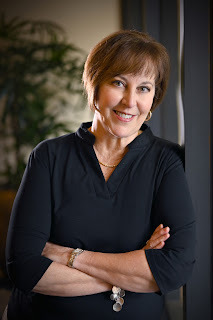
Any book that pleases and engages a singlereader is a good book. Any genre that encourages a young person to pick anotherbook has value. But, I lovehistorical fiction.
A historical novel has the ability to put areader in anyone’s shoes. When I open a historical novel I might find myself onthe dust-choked streets of the Old West in a waist-pinching corset andcalf-skin boots. Or I can prowl dimly lit corridors of a Scottish castle indainty velvet slippers. Perhaps, I am shod in sturdy leather shoes with shinybrass buckles as I debate freedom and revolution with patriots in 1776 Philadelphia.I can be any place and at any time.
Historical fiction makes the events of longago more relatable. Memorizing a list of dates and places for a history classprovides little understanding of the impact of events. Joseph Stalin isbelieved to have said, “If only one man dies, that is a tragedy. If millionsdie, that is only statistics.” A novel can help us wrap our minds aroundsweeping epic events. The immersion into the human life and its dailyactivities, seeing the smaller picture that lays within the bigger picture, createsempathy. This improved perceptive can also help us better navigate currentproblems and situations.
The blending of facts with imagination forms amore compelling read than just a textbook. Historical fiction entertains whileit educates. Storytelling has always been a part of the human experience; it isin our DNA. It’s how we have always shared our past, explained our culture, andtaught the next generation.
I grew up in the high mountains of centralColorado hearing stories of the colorful characters that first inhabited theregion. When I moved to the East Coast, I discovered that people didn’t knowmuch about the pioneers and their adventurous lives. The white settlers who exploredand made homes in the area were bold trailblazers, not just in the sense thatthey turned their backs on all they knew and trekked into the wilderness. Theutter lack of infrastructure and civilization allowed—nay, required—that strictconfining social dictates be thrown by the wayside. The old ways of thinkingwere smashed like a useless china tea set falling from the back of a Westwardwagon and new more pragmatic norms were accepted.
Women in particular benefited from thissocietal blank slate. The need for labor gave Western women opportunities tocreate careers that their sisters in the East did not have. Females in thewilderness territories blazed trails in business, were pioneers of medicine,and ground-breakers in politics. Females in the new states of Wyoming, Utah, andColorado were voting before the turn of the twentieth century, decades beforethe 19th Amendment was ratified. These gals were audaciously creatinghistory but in small ways that was rarely reported to the outside civilization.
So many fascinating stories, never wellrecorded, are being lost, fading from our collective memory. I want to sharethese tales of personal courage and societal innovation that would otherwisebecome a forgotten footnote. We can learn from these tenacious, fearless rolemodels. But only if we know of them.
I want to read and write about common peoplecaught in challenging situations and how they rose to meet them. The books thatline my shelves educate me, entertain me, and help me to develop a sense ofempathy that will serve me in the modern world. These novels inspire me. Thisis why I write historical fiction.
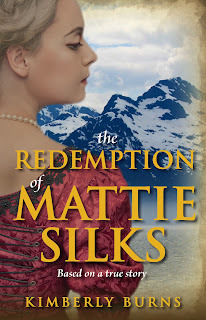 Find out more at: https://www.amazon.com/stores/author/B09G4S8N2L
Find out more at: https://www.amazon.com/stores/author/B09G4S8N2L
April 30, 2024
Why I Write Historical Fiction - A Guest Entry from Samantha Wilcoxson
Samantha Wilcoxson writes emotive biographical fiction that enables readers to connect with history's unsung heroes. She also writes nonfiction for Pen & Sword History. Besides reading and writing, Samantha loves sharing trips to historic places with her family and spending time by the lake with a glass of wine. Her most recent work isBut One Life, a novelization of the life of American patriot Nathan Hale, and a new biography of James Alexander Hamilton is coming soon.
Wehave so much to learn from the past. In a society obsessed with the future andsupposed progress, it is tempting to dismiss those who have come before us and broughtus to where we are. Perhaps we believe we have moved beyond their lessons andold-fashioned ways, but I find evidence almost every day that we can benefitfrom deeper study.
WhenI select a historical figure to write about, my objective is to tell theirstory in a way that enables modern readers to connect with them as a well-knownfriend and abolish the distance between the now and then. I hope to inspirereaders to contemplate the values and character of the people in my storieswith the desire to take on some of those positive attributes themselves. Ofcourse, I encourage readers to appreciate the past and those who perseveredthrough circumstances that we cannot imagine coping with ourselves.
Historicalfigures also made mistakes, sometimes unbelievably profound ones, and we canlearn from those too. How can we expect to avoid the errors of the past if wedo not know about them? Will some of what we read make us uncomfortable? Icertainly hope so. When we think critically about decisions and actions of thepast, we should also look at our own the same way.
Peopleof the past share the universal human experience with us. We might thinkourselves quite different from them, but we hold in common the most substantialparts of life, such as love, family, and friendship. They endured tragedy andheartbreak, just as we sometimes do. Their perseverance often resulted in ourability to avoid hardships that they were forced to cope with.
CatherineDonohue is a beautiful example of this. She was an ordinary young woman wholoved her family and her church until her job at Radium Dial changedeverything. Catherine’s medical struggle with radium poisoning was horridenough, but she also insisted on taking up the legal battle with her employerto take responsibility for the sick and dying women they dismissed. A quiet,small-town girl became a heroic woman who can serve as an inspiration to usall, even as she lost her personal fight to survive. I alternated betweenwonder, sadness, and anger as I wrote her story in Luminous.
Womenlike Catherine are the reason I write historical fiction. I want people toremember her, connect with her, and feel inspired by her. Each of my novelsfeatures a person with a profound story to tell, one that I could not resist writing.
Mymost recent novel, But One Life, takes readers back to the AmericanRevolution and the life of a young man only vaguely remembered today. Did hereally say that he regretted he had but one life to give for his country beforebeing hanged as a spy by the British? Maybe, but what life journey had createda young man willing to make such a sacrifice? I wanted to know – and wanted myreaders to know – more about Nathan Hale and his short, tragic life.
Ihope my readers agree that I write historical fiction to share the emotions andexperiences of those who have gone before us. May their lives enrich our ownjust as our stories will hopefully one day encourage and inform those still tocome.
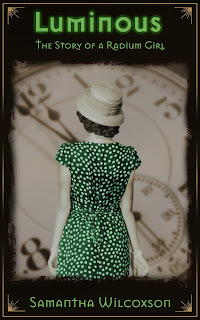
Find out more about Samatha Wilcoxson's books at: https://amazon.com/author/samanthawilcoxson
April 23, 2024
Why I Write Historical Fiction -- A Guest Blogpost by Janet Oakley
Janet Oakley, writing as JL Oakley, writesaward-winning historical fiction that spans the mid-19th century to WW II. Hercharacters, who come from all walks of life, stand up for something in theirown time and place: the Pacific NW and WWII in Norway.
When not writing, she enjoys delving into localhistory, looking for little surprises that tell a larger story of the area andthe nation’s past, fodder far more novels or non-fiction pieces. She loves togarden, weave, and demonstrate 19th century folkways. She can churn some prettymean butter.
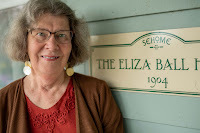
Why do I writehistorical fiction? It would be easy to say out of curiosity, but I know theseeds of my passion began with my mom introducing me to her favorite historicalnovels, The Prince of Paupers and Captain from Castile—all played by heartthrobTyrone Power in 1940s movies—and most importantly, family stories that reachback to the founding of my country. I was twelve when we took my 82 year-oldNana to Newburyport, MA to visit the 1670 tavern her direct ancestor had run inthe seventeenth century. Seeing that ancient building, visiting the villagegreen that celebrates the arrival of the ship that brought him in 1638, andseeing the grand home of his grandson built in 1702, left a deep impression onme. Here was the timeline of my family history that led down to the present,yet I wondered how my ancestors lived in those times.
My Nana’s ownstory of pioneering in the West in the late 19th century was a livingembodiment to me. I hung on her stories that she sent to me in letters and toldme in person. In elementary school, inspired by The Little House on the Prairie series, I began to write my ownhistorical stories. While pursuing a degree in American History years later, Iwas honored to be an intern and later, a volunteer in the Smithsonian’s AnthropologyArchives. One of my first assignments was to search early 19th century publications’depictions of Native Americans. I was successful, finding the oldest one fromthe 1820s (an authentic portrayal), but as I was searching, I found scandals(Swill’s Dairy in 1850s D.C.), first account of Yellowstone in the 1830s, andterrible poetry and jokes, which I collected. My exposure to these earlymagazines and newspapers such as FrankLeslie’s Illustrated News, increased my curiosity and made me ask, “Whydidn’t I know this?”
So why do Iwrite historical fiction? I believe it’s to tell untold or lost stories. Thoughlast year was the 90th anniversary of the Civilian Conservation Corps, FDR’swonderful program that saved millions of young men and their families and builtour state and national parks, few knew enough to celebrate the anniversary.Yet, the impact that program had on people during the Great Depression of the1930s continued on into World II. Without young men learning to work togetherin squads to accomplish difficult tasks, America would have been six months ormore behind getting our soldiers ready to fight. Tree Soldier, my novel about a young man struggling to redeemhimself in the CCC in the Pacific NW, shows how the program operated and how itaffected a local, mountain community. TimberRose is about women climbing mountains in skirts in the same locale in1907. More than half of the major mountain climbing clubs were made of women.They were part of the early environmental movement.
One of myfavorite untold stories are about Hawaiians in the Pacific NW, in particular onthe San Juan Island, working as shepherds and laborers for the Hudson Bay’sCompany during the 1850s and 1860s. Their contribution to the building of whatwould become Washington State should not be overlooked. Mist-chi-mas: A Novel of Captivity explores the dynamics ofHawaiians, called Kanakas, Coast Salish, English Royal Marines and the US Armywhen the island was under military occupation. The novel also explores society’spressure on what a woman could and could not do. “Mist-chi-mas” means captivein Chinook Wawa.
In the lastrecent years, my focus on untold stories has been on Norway in WWII. When Ifirst started to research my novel, The JøssingAffair, many years ago, I was surprised how often American magazines suchas Newsweek and Times reported on events happening in German-occupied Norway. Yet,all the WWII novels recently published seemed to be about the resistance andhorrible events on the continent or the Homefront in the UK. Who knew that up400,000 soldiers were deployed to Norway, a country of three million (Berlin’s population in 1940)? Thatthere were concentration camps in Norway and killing fields? How ordinarypeople resisted against Nazifying of their churches and schools? Thedestruction of Telavåg, “The Lidice of the North.” I was fascinated by the leader of the DeafChurch’s role in the Resistance and the hearty fishermen on the West Coast whosmuggled agents into the country and refugees out to Shetland. The psychopathicHenry Oliver Rinnan, a Norwegian who was Norway’s number two war criminal afterQuisling. All untold stories. I am happy to learn that people visiting Bergenare now taking the time to go out to the wonderful museum in Telavåg becausethey read about it my novels.
This is why Iwrite historical fiction.
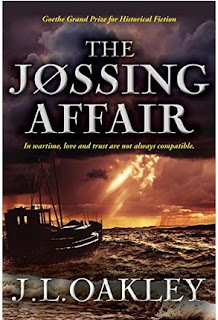
Find out more about Janet an her books on her website: https://www.jloakleyauthor.com/
April 16, 2024
Why I Write Historical Fiction - Guest Blogpost from Scott Amis
Joseph Scott Amis retired from a thirty-year professional and business career in 2004. He has since devoted his time to medieval and Crusades studies and writing historical fiction. Until recently, Scott was a writer and features editor at Real Crusades History. A native Texan, he lives in Dallas.
Good question. In junior high andhigh school, my best subjects were English, history, languages, and art.This should have told me something, but I never once considered studyingto become an artist, architect, writer, or historian,and I certainly didn’t want to be a dentist or a lawyer.
Off to college, and yearsspent muddling through stints in pre-med, anthropology, and finearts. After nine years of “in and out”, I surfaced in the real worldwith a degree in architecture. This proved to be a late but wise career choice,and I married and settled in soon after. And finally, my momwas happy!
My wife and I are both readers,and, in the days before the internet and Amazon.com, our Saturdayswere often spent at the public library. My interests inevitably ran tohistory and historical fiction; my wife’s, to biographies of famouspeople, both historical and pop-culture. As time went on, I foundmyself dreaming about writing a novel, but what to write? As a“dyed-in-the-wool” Southerner - both of my great-grandfathers fought for theSouth in the US Civil War - and as a “boomer” whose parents and theirgeneration were directly involved in World War II, thoselegendary conflicts would seem to be my favorite choices.
But, by then, my reading was almostexclusively centered on medieval history and the Crusades, and the 2005 firstrelease of Ridley Scott’s epic “Kingdom of Heaven”, though deeply flawed,seemed to light a spark. I was going to write a novel about the FirstCrusade!
Aware that this project would require meticulousresearch and development of a polished style, I began with a short storyabout an ongoing conflict between neighboring feudal polities in late eleventhcentury France. The story was successful for my purposes, and became the basisfor a fictional account chronicling a young knight’s adventures in France,beginning with his coming of age in 1086 through 1095 and the eve of the FirstCrusade, and ultimately, ending with his death in the Kingdom of Jerusalemthirty years later.
Having read my share of Crusades novelsand a fair sample of scholarly works, I opted for an atypical approach. Insteadof beginning with armies of eager Crusaders setting out for the Holy Land, ToShine with Honor commences in 1086, nearly a decade before Pope UrbanII delivered his immortal address to the noblemen, knights, and commoners assembledin a field outside of Clermont in November of 1095. Thus, I hoped to show theeveryday lives and struggles of people of all social classes in the unsettled anddangerous world of late eleventh century France, and the circumstances whichinfluenced some to become Crusaders.
By early 2010, I had a 900-page firstmanuscript, and, after numerous rounds of editing and revisions, the firstvolume of was published in summer of 2016to unexpectedly positive reviews and surprising literary recognition. Thesecond volume continues to be a work-in-progress. Find out more about ToShine with Honor at: (hotlink to amazon page).
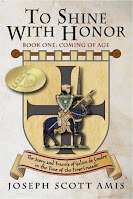
Find out more about To Shine with Honor at: here.
Blog Host Helena P. Schrader is the author of 25 historical fiction and non-fiction books, eleven of which have one one or more awards. You can find out more about her, her books and her awards at: https://helenapschrader.com
Her most recent release, Cold Peace, was runner-up for the Historical Fiction Company BOOK OF THE YEAR 2023 Award, as well as winning awards from Maincrest Media and Readers' Favorites. Find out more at: https://www.helenapschrader.com/cold-peace.html
April 9, 2024
Why I Write Historical Fiction - A Guest Blogpost by Stephen Estopinal
Stephen Estopinal grew up in theswamps and bayous of Louisiana. He graduated from Louisiana State University(class of 1968) and was a US Army veteran (Combat Engineers 1969-1971). He joins me to talk about why he writes historical fiction.
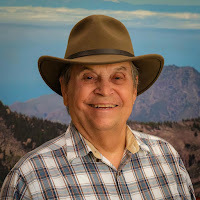
I writeHistorical Fiction to introduce my readers to aspects of American History thatare ignored in most textbooks. I was a living history volunteer at theChalmette Battlefield National Park and a black powder expert. My infatuationwith history, particularly the history of Spanish Colonial Louisiana prompted meto write a series of novels to bring that history to life. I am a descendant of Canary Islanders (Isleños) transported to Louisiana by the Spanish during the American Revolution. My books are based upon on extensive research as well as family oral history. My stories of Colonial Louisiana are from a Spanish point of view.
My first novel wasElTigre de Nueva Orleáns published in 2010 and approved for sale by theNational Park Service at the Chalmette National Park Visitor’s Center. It hasbeen followed by a novel nearly every year. Incident at Blood Riverwas published in 2011, Anna in 2012, Escape to New Orleans in2013, Mobile Must Fall. in 2014, Pensacola Burning in 2015, Solitario;Bootlegging on the Bayou in 2018, The Man From Red Hill in 2018 and Beneath the Bonnie Blue Flagin 2021. These novels are allhistorical fictions of 18th and 19th Century. They tellthe story of the Isleños settlers inLouisiana and their struggle for survival. Published under the label LibrosIsleños of Gonzales, Louisiana, writing historical fiction has provided me withan enjoyable hobby and a means of keeping the diverse history of colonialLouisiana alive.
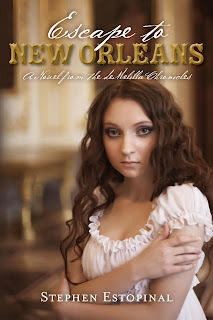 Find out more about Stephen Estopinal and his books here.
Find out more about Stephen Estopinal and his books here.
April 2, 2024
Why I Write Historical Fiction - A Guest Blogpost by Martin Campbell
Martin Campbell was bornin Greenock, Scotland. He worked asa psychologist and university lecturer in London, New York, Edinburgh and StAndrews. His first historical fiction novel, Sailor’s Heart, is availablein paperback, Kindle and as an audiobook from Amazon. His next book 1856: Croton Oil and Pecuniary Profit will be published in June 2024.
Besideswriting, Martin also enjoys sea fishing and playing poker, with little returns oneither of these activities.
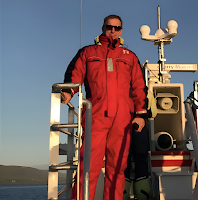
Iwrite historical fiction by accident. Iam not a historian, nor a novelist. I ama psychologist.
Fiveyears ago, while walking around the largest artificial lake in the UK,surrounded by the largest man-made woodland in Europe, I met a very old man, afellow walker.
“Terriblewhat they did to those poor sailors down there,” was the first thing he saidto me, pointing at the lake and shaking his head.
Itwas a choice between checking my watch and quickly moving on, or finding outwhat the hell he was talking about.
That random comment about sailors became, for me, aresearch interest, then an almost obsessive need to know about a little-knownaspect of WWII naval history. I discoveredthat the British Admiralty had set up an onshore psychiatric facility, HMS Standard,to "recycle" Royal Navy sailors who had broken down. These were men who had suffered “nervousexhaustion” or “combat stress” in battle.
It took me two years of research in naval archivesand psychiatry journals to sort out historical fact from fiction and to findout what happened to sailors at this facility. The fact was more incredible than anyfiction.
The remains of HMS Standard nowlie at the bottom of the lake, Kielder Water, after the valley was flooded whena dam was built.
My first thought was to publish my research in oneof the many reputable psychology or history journals,where the story would be read by a handful of academics and students and justas quickly forgotten. The more researchthat I did, however, the more I became convinced that this important piece ofhistory should be made more relatable and, above all, more accessible to awider audience.
I hadthe basic historical facts about what was referred to in academic writing ofthe time as The Kielder Experiment,or A Submerged Site of Therapeutic Endeavour. These facts alone told a remarkable story, butI was keen to fill in the gaps. I wantedto explore the background to “the experiment”, the people involved, theirmotives and emotions.
In myprofessional life, I was familiar with research methods: systematic reviews ofevidence, testing hypotheses and investigating causal relationships. To write a readable dramatization of real eventsat HMS Standard needed a very a different approach to research, however. What was required were fine details, minutiaeof the past that described and explained why the people–the doctors, the navy officersand the sailors of the time–behaved the way that they did. Myexploration of the WWII medical and historical records, revealed littleinformation about day-to-day life in this isolated facility, set in moorland, 30 miles from the nearest town.
There were many aspects of local and national life duringwartime that I had never considered until I began writing. What did people wear, how did they speak,what did they eat, how did they suffer during the war, what were theirattitudes? The most important of thesequestions, for purposes the book at least, was how the general public and theRoyal Navy viewed sailors who were no longer able or no longer willing to fightfor their country in a time of war. Werethey men who had reached a psychological breaking point, in need of treatmentand recovery? Or were they all justcowards, malingerers and poltroons, not to be pitied but despised? Are these views different today?
HMS Standard in NE England was where 842 men who hadbroken down at sea were received and "processed" between 1941-1944. Some men were never returned to duty. These were the basic statistics that got mestarted in writing historical fiction.
I can honestly say that I have learned as much about “human nature” inall its forms in my five years of historical research and writing as I havefrom my thirty years working as a psychologist.
I hope that readers learn as much fromthe book Sailor’s Heart as I did from writing it.
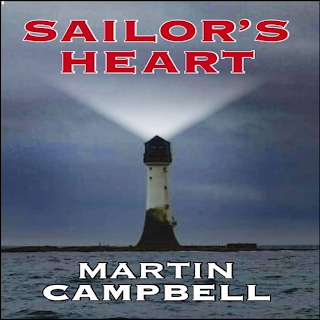
Find out more about "Sailor's Heart" here.

